A UNIQUE insight into war-time Salisbury – and much of Wiltshire – has been provided by new photographs released as part of an online archive.
Thousands of images, dating largely from 1943 and 1944, have been digitalised by Historic England.
They were taken by United States Army Air Forces (USAAF) Photographic Reconnaissance (PR) units stationed at bases around the country during the Second World War.
Now, more than 3,600 black and white images showing England from the air are available to the public for the first time in an online, searchable map.
The collection gives a bird’s-eye view of the impact of war on the country, capturing a wide variety of locations in detail.
Duncan Wilson, chief executive at Historic England, said: “Our USAAF Collection records changes taking place in England as a result of the Second World War, as well as capturing fascinating incidental detail, like American troops playing baseball.
“Our collection of USAAF wartime photographs were taken in England by the pilots and aircraft of squadrons that provided intelligence for the eventual defeat of Nazi Germany. This came at a cost, with many pilots killed in the line of duty.
“We are making these images available to the public for the first time online, giving people access to this remarkable collection of historic photographs.
“They help to highlight the vital role aerial reconnaissance played in the Second World War.”
Among the pictures are some Wiltshire landmarks, including Salisbury city centre and Stonehenge.
RAF IBSLEY, BICKTON & HYDE
Among the sites revealed are a host of RAF bases that have since been lost, as many were decommissioned after the war, such as RAF Ibsley, near Fordingbridge, where the airfield is now largely consumed by gravel pits and lakes.
The former watchtower can still be found on the site, with The Landmark Trust planning to restore the building in the coming years.
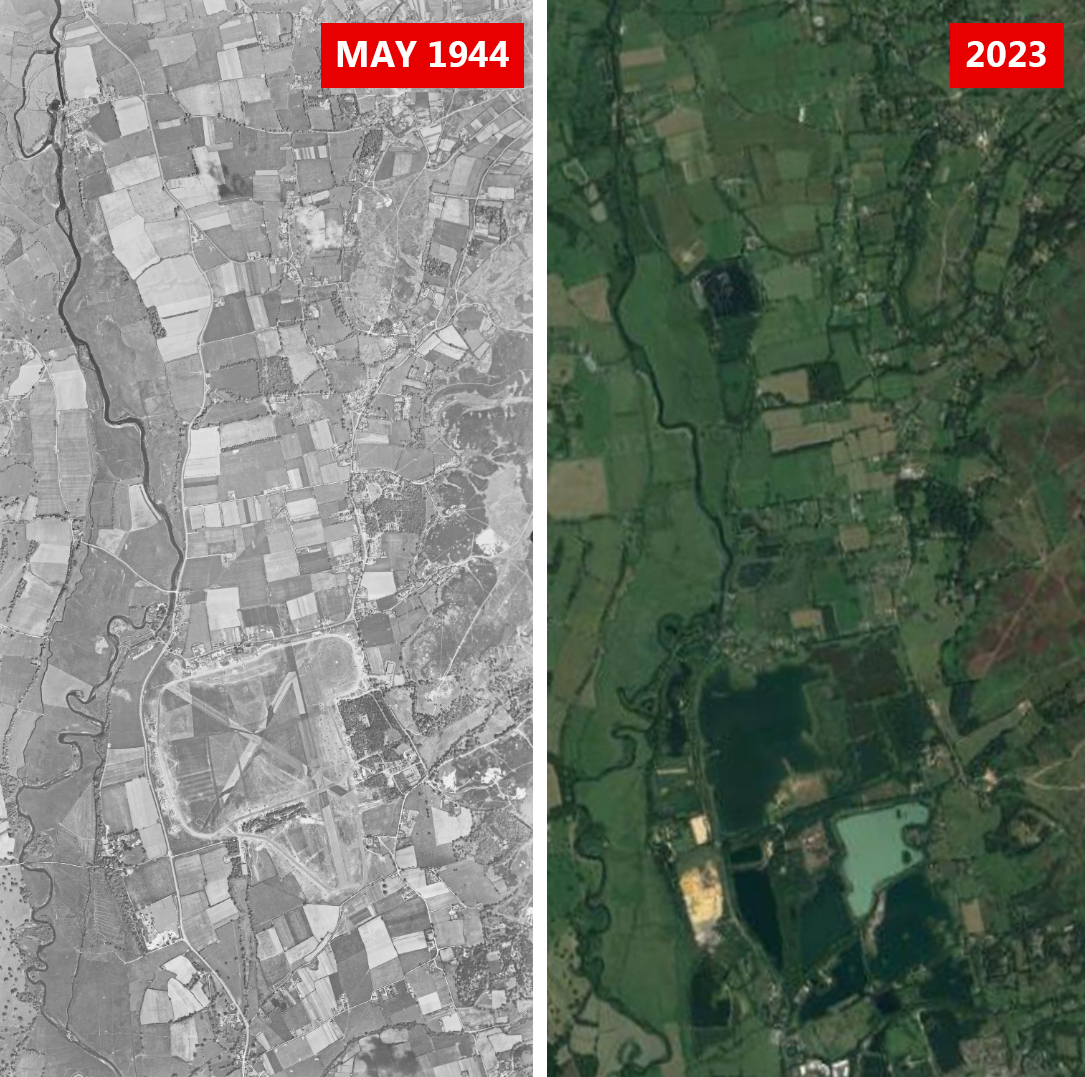
RAF Ibsley, Bickton and Hyde caught on camera by the USAAF in May 1944. Picture: Historic England Archive/USAAF Photography
Click here to open the full picture in a new window
STONEHENGE
The photos also feature a shot of Stonehenge, taken on Christmas Eve, 1944.
Much of the landscape looks much the same, as you would imagine, although the route of some roads and paths have been changed. The footpath around the monument has also moved back from the stones.

Much of the landscape around Stonehenge remains unchanged. Picture: Historic England Archive/USAAF Photography
Click here to open the full picture in a new window
BOSCOMBE DOWN
Another location caught on camera in December 1944 was Boscombe Down, which is now the longest military runway in the UK.
Although civilian operated, it is still used to support aircraft development.
The modern technology is a far cry from the planes pictured on th ground in 1944, with no obvious ‘strip’ in sight.
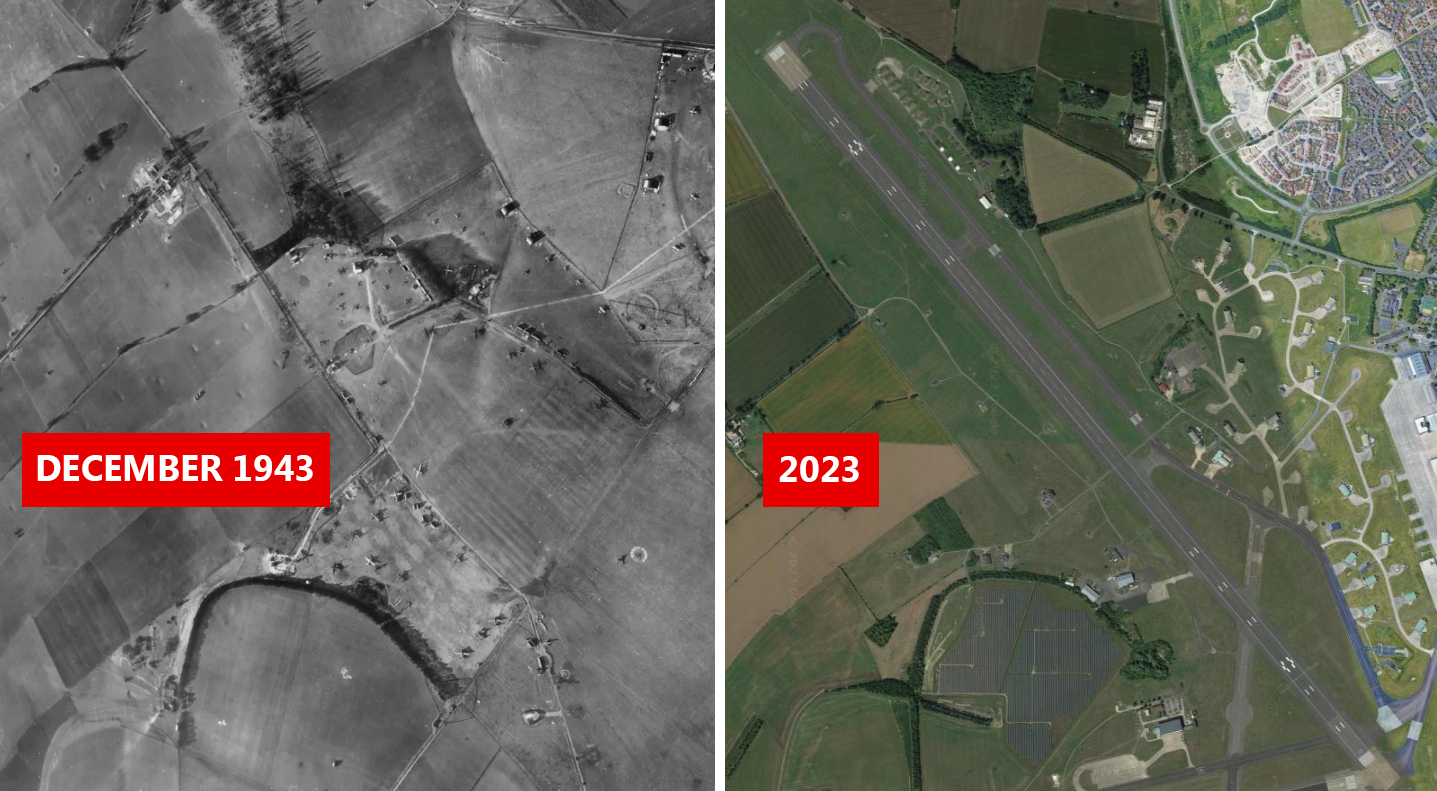
Boscombe Down on Christmas Eve 1943 and in 2023. Picture: Historic England Archive/USAAF Photography
Click here to open the full picture in a new window
To browse the entire archive, log on to https://historicengland.org.uk/usaaf
OLD TRAFFORD, MANCHESTER
Other notable locations snapped by the aircraft around the UK include the Old Trafford football and cricket grounds, in Manchester.
There is visible damage to the football ground in a photograph taken in May 1944. The ground was notably damaged by German bombs in March, 1941.
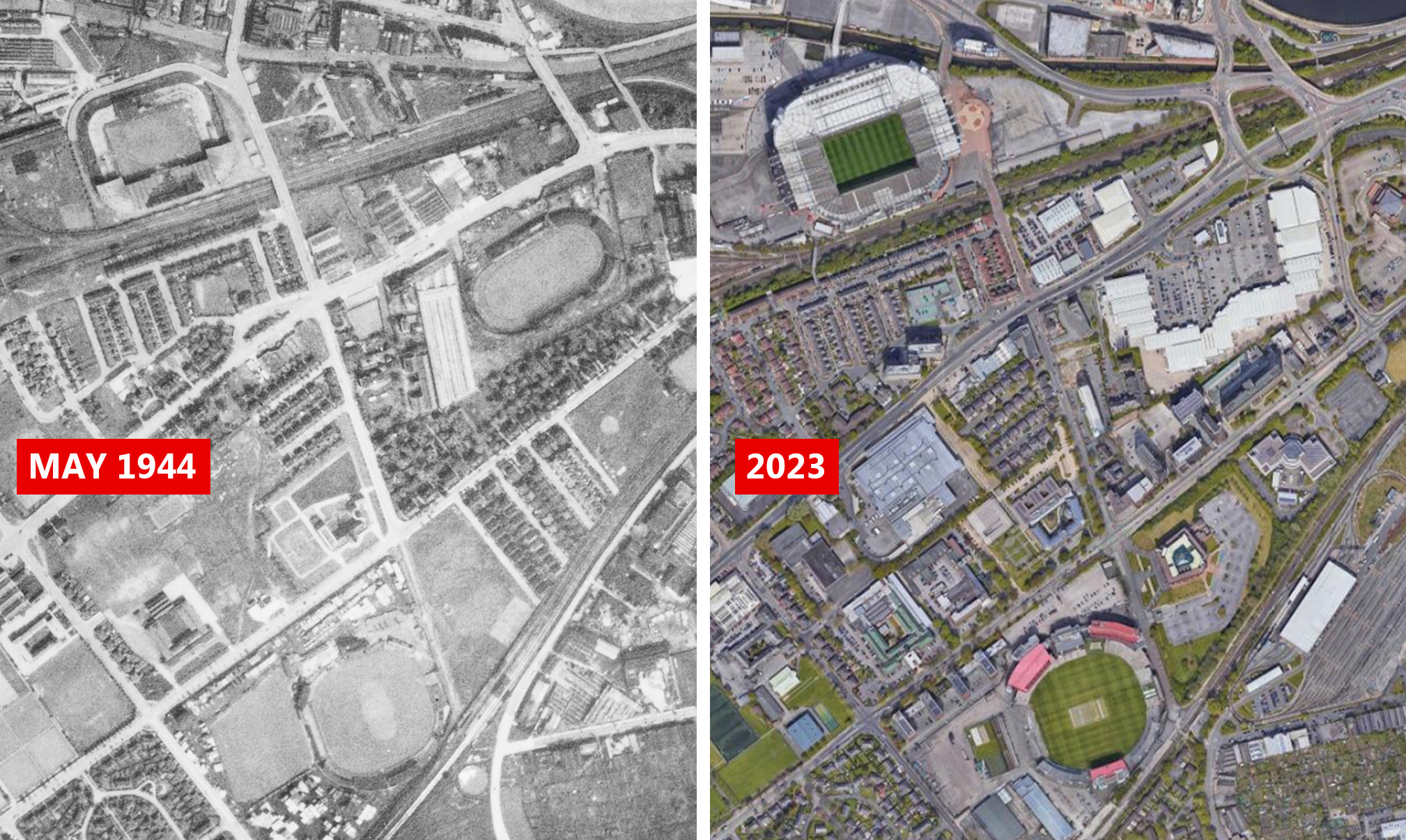
Old Trafford football and cricket grounds are captured in 1944, with bomb damage visible at the home of Manchester United. Picture: Historic England Archive/USAAF Photography
Click here to open the full picture in a new window
GREAT WESTERN RAILWAY WORKS, SWINDON
Elsewhere, the changes in industry are revealed by the pictures.
The sprawling former Great Western Railway works, at Swindon, is clearly visible in a photograph taken in September 1943, but by 2023, much of the site that in part made the town famous has gone, redeveloped as a college campus and a retail complex.
However, some of the surrounding residential streets – and some warehouses – appear largely unchanged (from above, anyway).
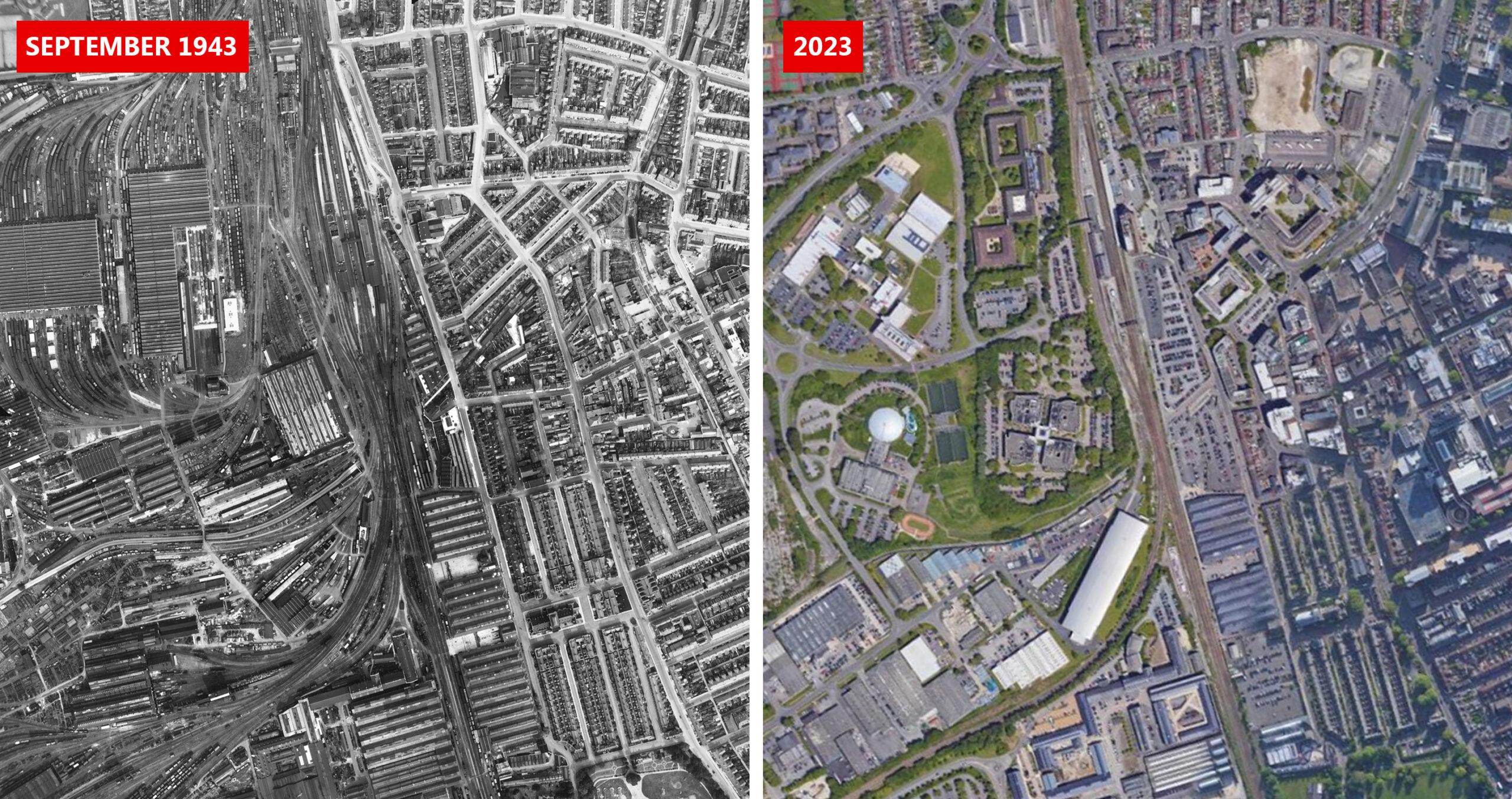
The Great Western Railway works at Swindon dominate the landscape in September 1943, but have largely disappeared now. Picture: Historic England Archive/USAAF Photography


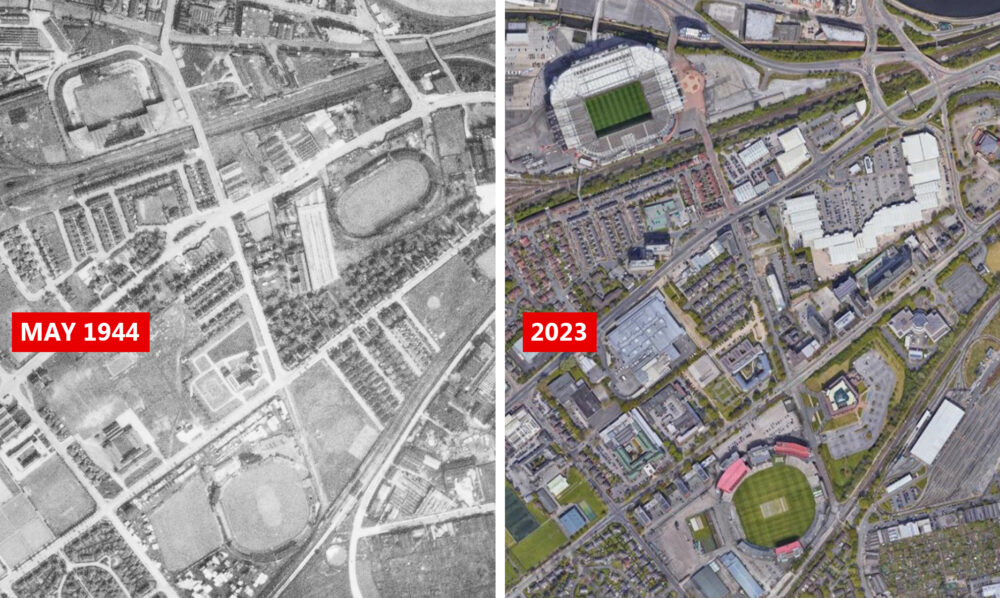


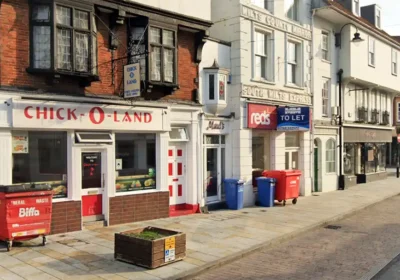
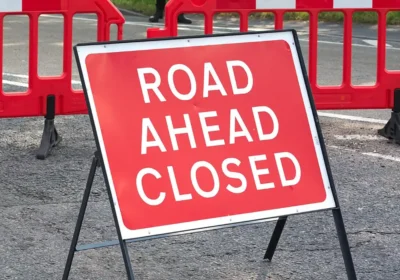
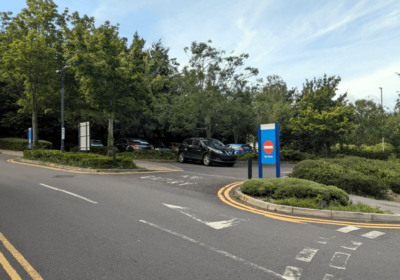

Leave a Reply